It is common for art exhibitions to include animating events such as artist talks, where audiences can discover more about the artist and their working methods, the thinking and doing behind the project, the various challenges and discoveries involved in developing the work, and so forth. Often these artist talks take the form of a conversation between the artist and the curator. For KinesTHESES, however, I proposed something a bit different to the invited artists.
Negotiated Interactions: Making room for artists’ perspectives on their work
The curatorial premise of KinesTHESES is quite specific, and not necessarily indicative of the way the artists I invited—who are quite varied in their approaches—would normally choose to frame what they do. I realized that the artists might want to highlight aspects of their practice and/or of the project they were exploring in KinesTHESES in ways that were distinct from my emphasis on the audience’s tactile-kinesthetic reception and experience of the work. Of course artworks and artists always find ways to wriggle out from under the weight of curatorial authority, but I wondered how I might design the KinesTHESES residencies in a way that would support rather than suppress some of these inevitable leakages. I wanted the artists to have at least one forum where they could frame what they do outside of the overdetermination of my curatorial vision.
At the same time, I felt these contextualizing events would benefit from a dialogic format: not just each artist offering their own reflections, but an interactive or even intra-active engagement of some kind. As part of the design and funding of the residencies, I proposed a “negotiated interaction” between each of the locally based artists and one of the artists visiting from elsewhere. These loose pairings would be distinct from whatever else the artists were developing during KinesTHESES; the artists weren’t required to collaborate on their proposed projects. I put individual artists in contact with each other, and told them that they could decide how to construct their dialogue. It could be as straightforward as a recorded conversation between the two of them, but might take a variety of formats, from video or text exchanges to performances. My one constraint, since I understood this primarily as an opportunity to contextualize their work for a larger audience, was that there should be some way to digitally document their interaction so that it could be made available through the Toronto Performance Art Collective’s website or social media platforms.
Consequently, each of the pairings unfolded differently. Stephanie Marshall and Sakiko Yamaoka decided to undertake a public intervention together in Toronto’s Kensington Market neighbourhood, which they called Step 2.
Negotiated Interactions as components of the KinesTHESES Digital Toolkit
Few of the artists opted for a traditional artist talk as the format for their negotiated interaction. Of the four (out of five) that have currently been completed, all have been live, performative events. Unlike the commissioned works, however, these interactions were not produced with the curatorial imperative of engaging an audience of participants and witnesses primarily as tactile-kinesthetic creatures. Nor were they documented with the express concern of potential gestural reanimation as tactile-kinesthetic experiences in the bodies of future audiences.
This means that these performance documents sit differently within the toolkit. They are not documented as gestures that aim to be taken up or extended by new audiences, necessarily. They are presented, rather, as the artists’ commentary on their interests and working methods. Nevertheless, as live, site- and time-specific events, they generate the same kinds of questions that haunt the other digital records assembled here. How should the interaction be recorded, and what parts of the recordings are pertinent and useful to include in the KinesTHESES Digital Toolkit? What do the recordings capture, and how should they be accessed?
For Step 2, the urgency of the recording process was reinforced by the nature of the event as a public intervention. Because the time and place of the artists’ actions were only decided in the second week of Sakiko’s residency, there was little time to solicit an informed audience interested specifically in the KinesTHESES series; those who came into contact with the live event were, for the most part “accidental audiences.” For Step 2, I videotaped Stephanie and Sakiko’s actions, while Stephanie’s daughter, Milaya Marshall, took photographs and short video sequences with her phone. After the intervention, I also scanned the notebook pages Stephanie and Sakiko used as part of their mobile installation. The resulting documents consist of the following:
1. A more or less unedited version of the video footage I shot, totalling just over two hours. The footage has been broken into three consecutive parts to keep individual file sizes under 5 GB. Note that the camera did not run continuously, as I often stopped recording to shift positions, and sometimes chose to watch what was happening without the mediation of the camera. The full public intervention lasted approximately three hours.
2. A 20-minute edited version of the video footage.
3. One sequence from the video files shot by Milaya Marshall that documents an action of the performance less clearly captured by the footage that I shot.
4. A selection of 40 photos from the 635 still images taken by Milaya Marshall.
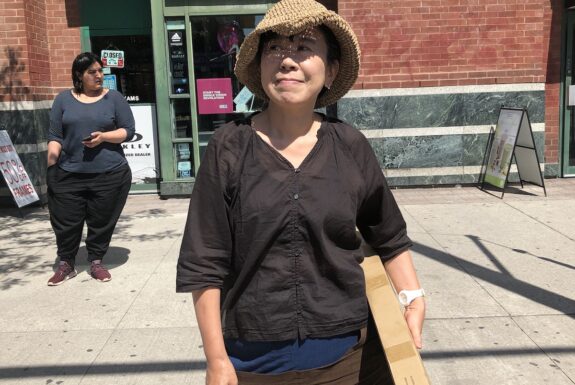
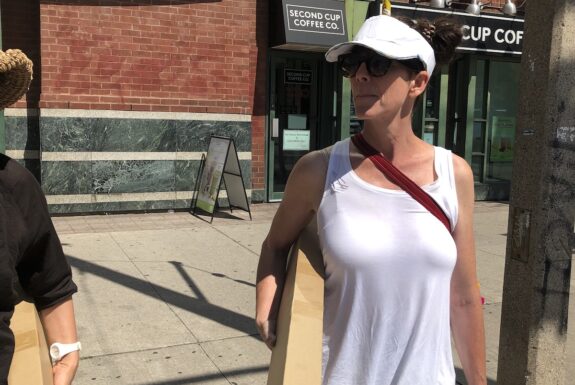
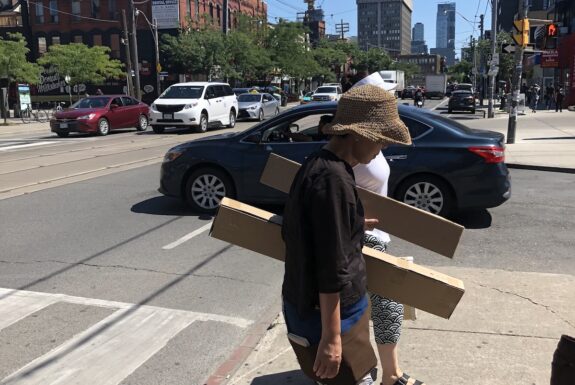
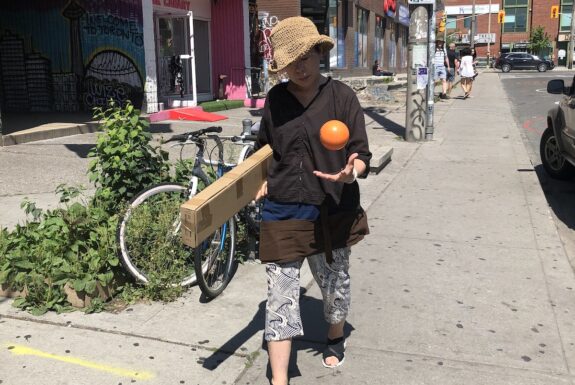
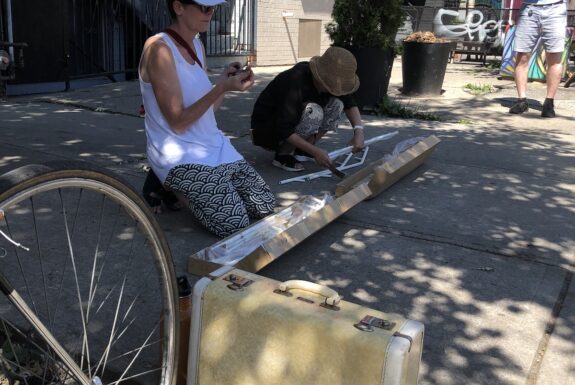
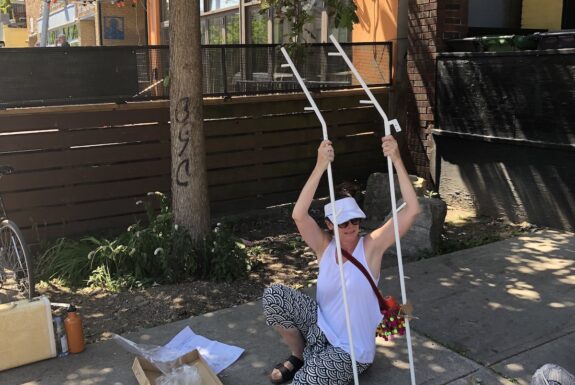



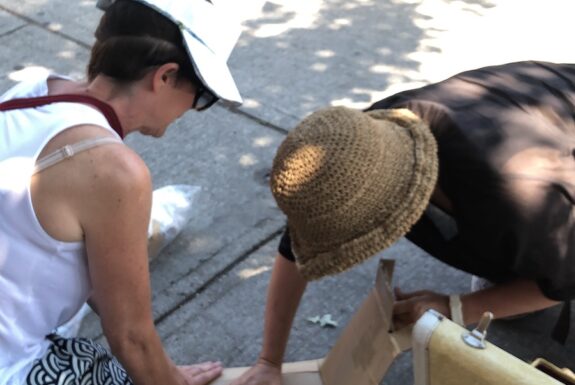
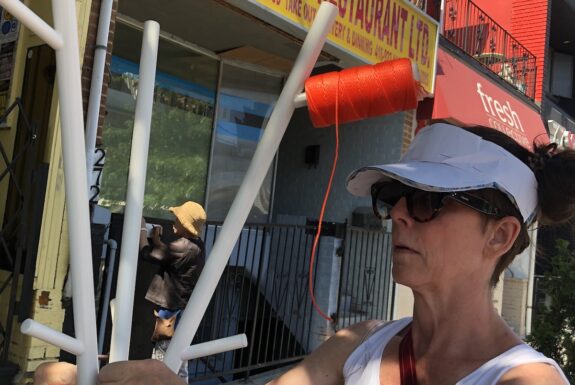
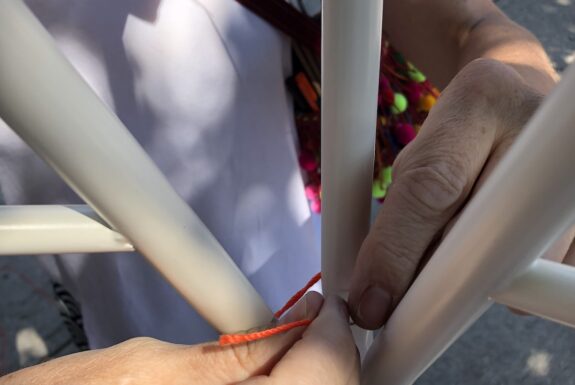
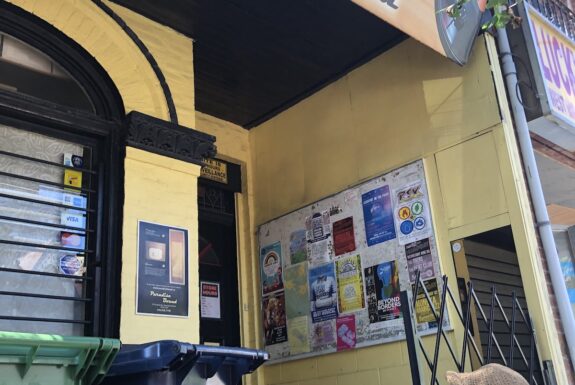
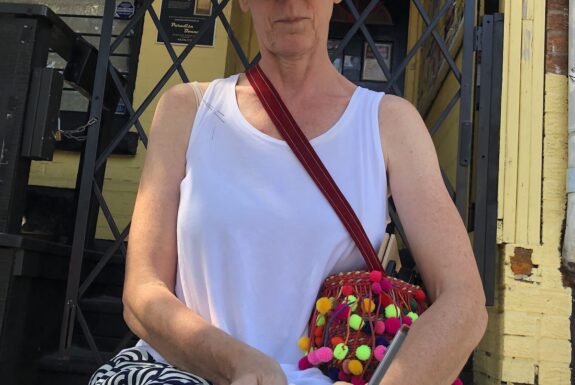
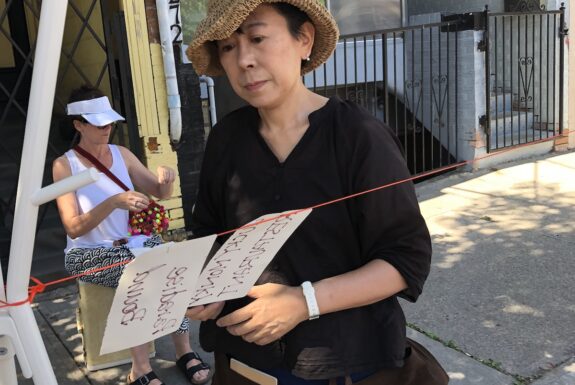
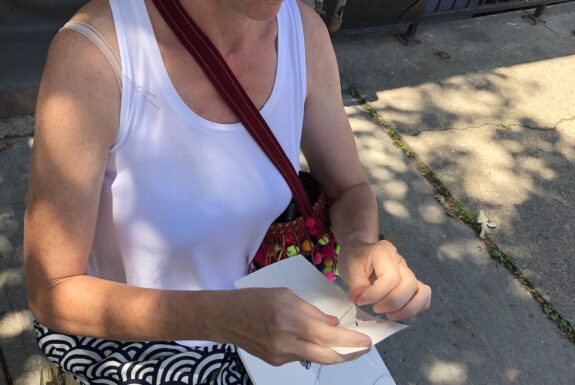
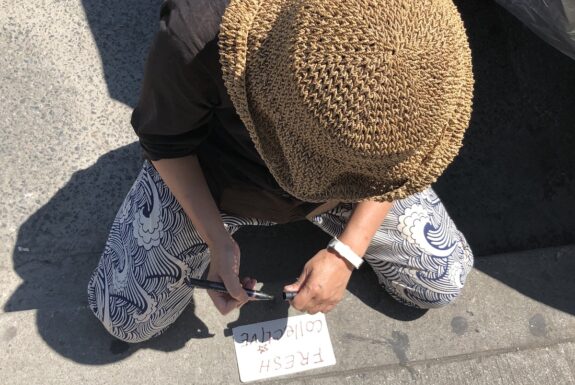

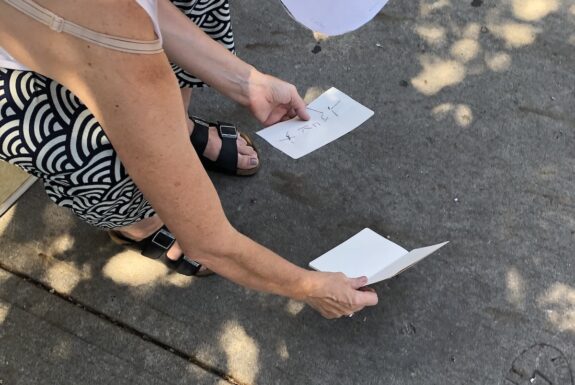


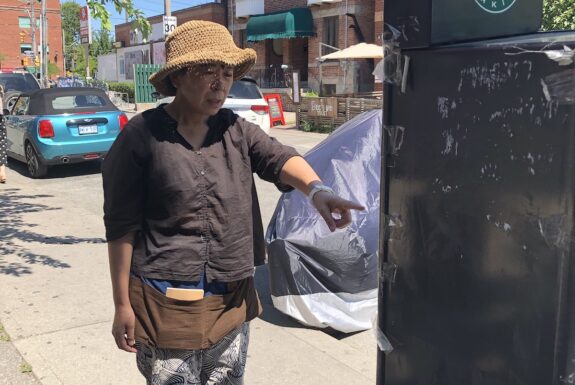
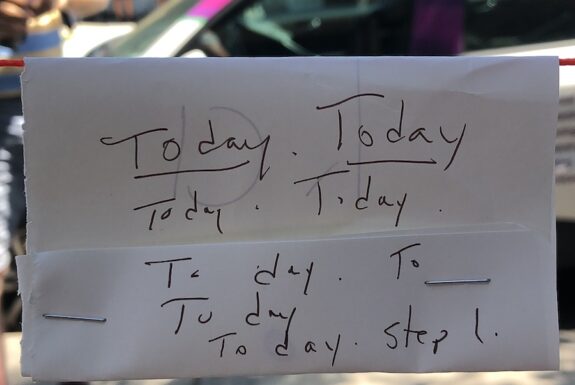
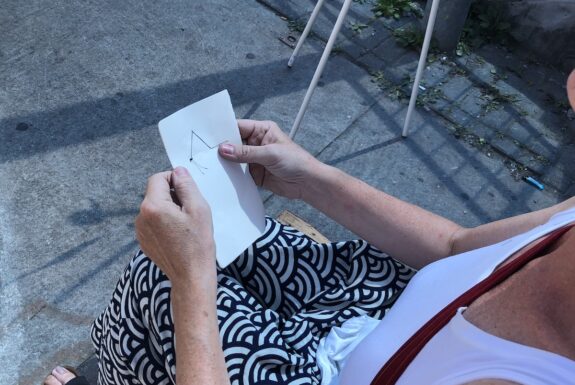


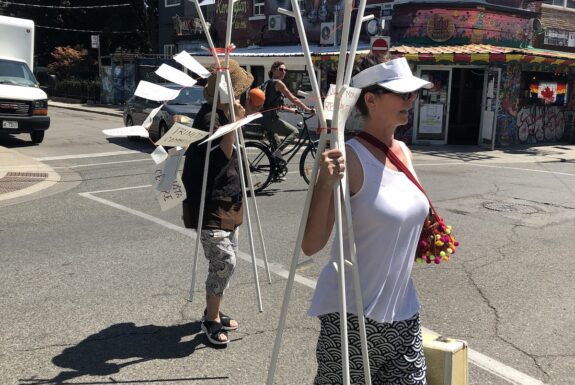
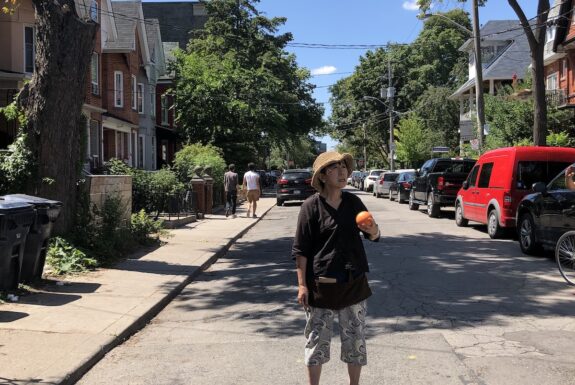
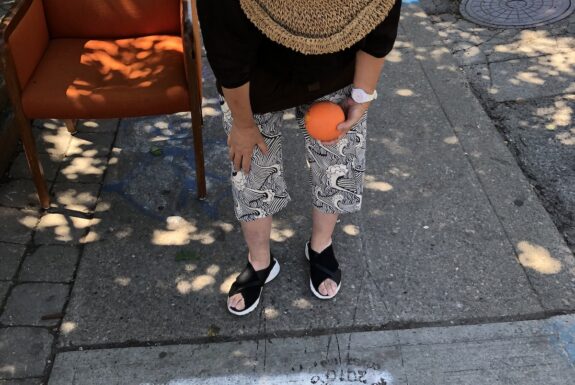
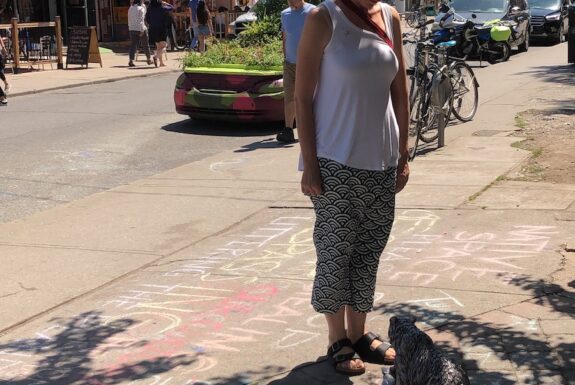

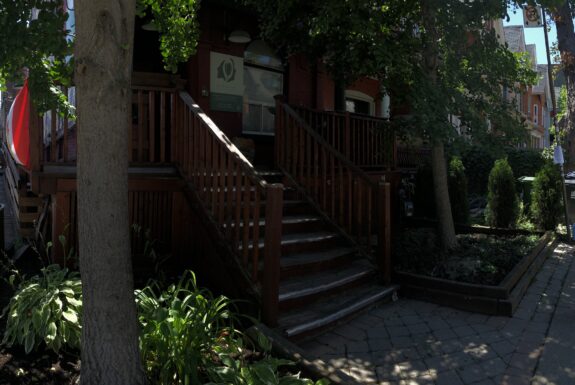


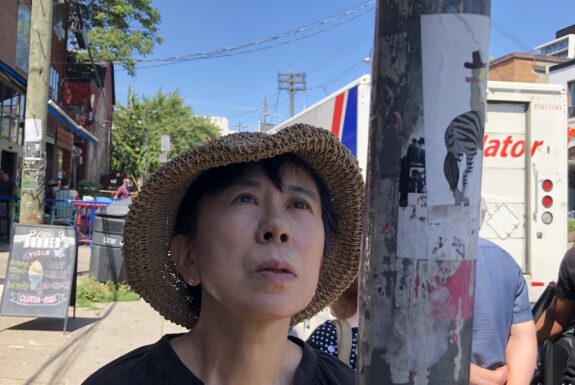
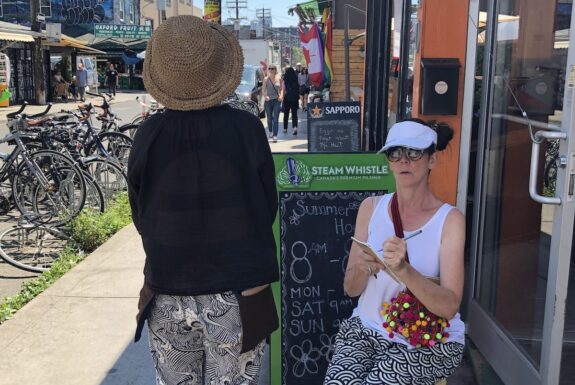
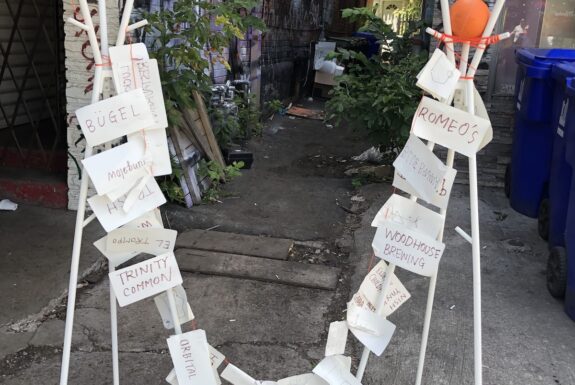

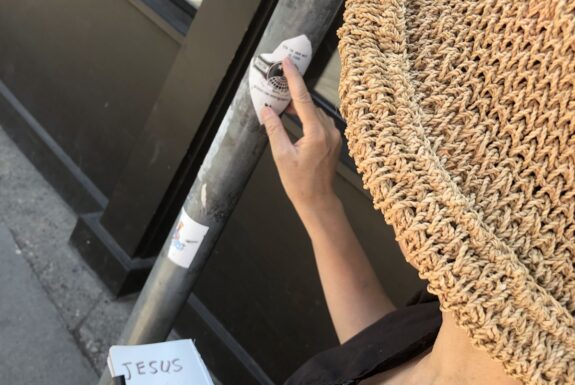

5. Digital scans of 72 of the notebook pages that Stephanie and Sakiko added to their mobile installation, along with the orange cord to which they were attached. For most of the pages, only one side of the page was scanned, since the reverse side was left blank. Some pages were sewn with thread and/or folded with writing or marks on both sides; in these cases both sides have been scanned. The sequence of the scans follows the left-to-right spatial order in which they were positioned on the cord. This does not correspond to the temporal order in which Stephanie and Sakiko attached them. One notebook page, on which Sakiko had written the words “Augusta Centre,” is missing. It was knocked off the installation near the end of Stephanie and Sakiko’s intervention, and became the impetus for the artists to choose an end location for their action. The page was not among the materials entrusted to me by the artists at the end of Step 2.

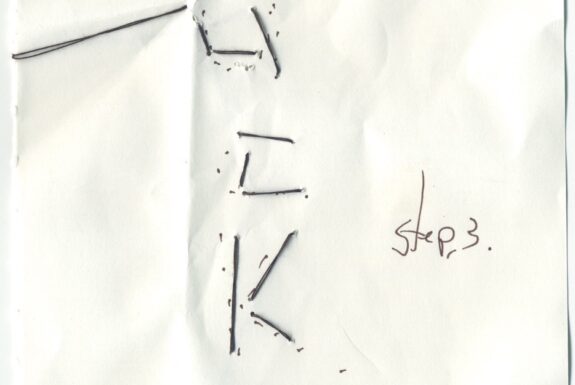



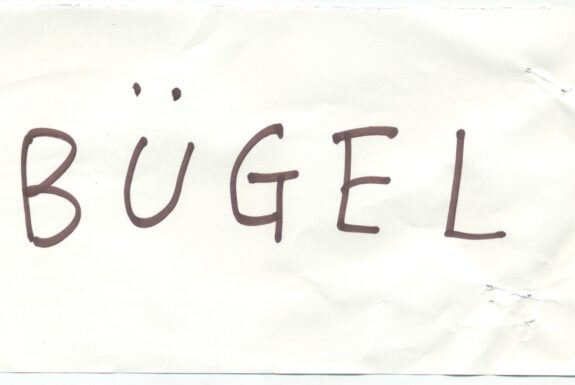

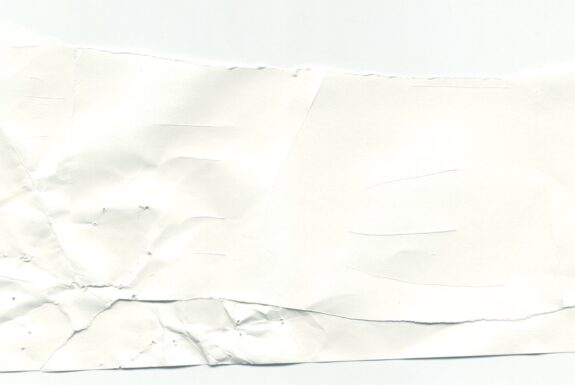

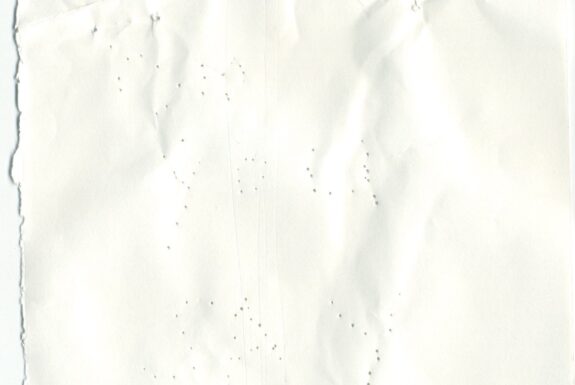


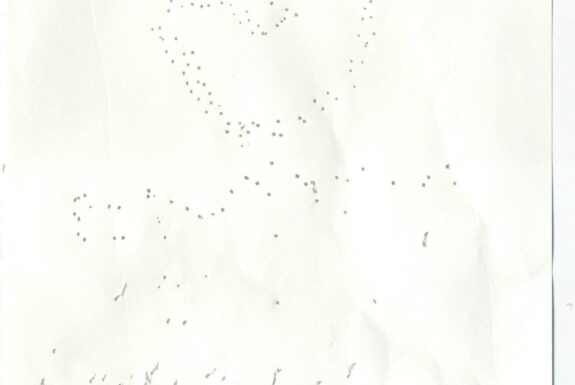
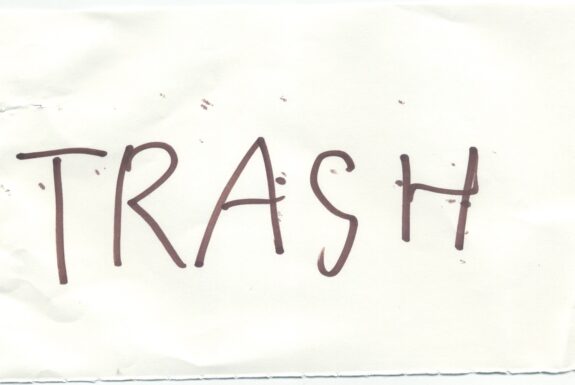
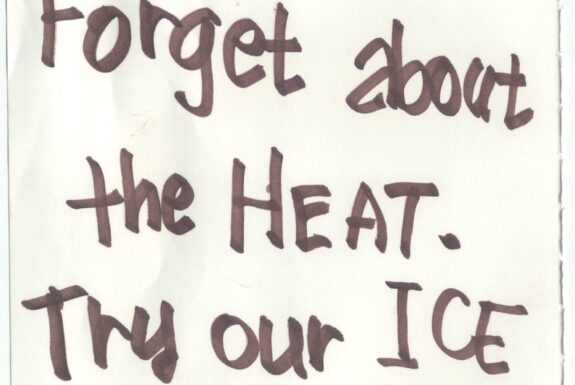
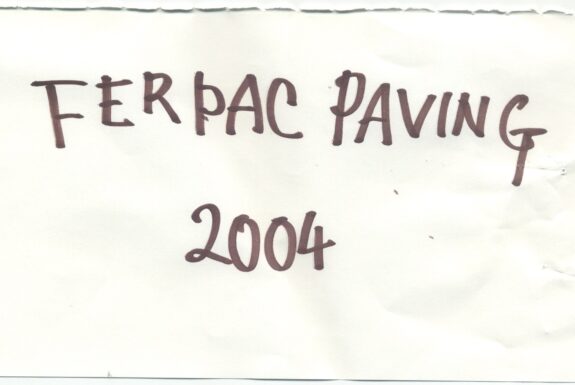

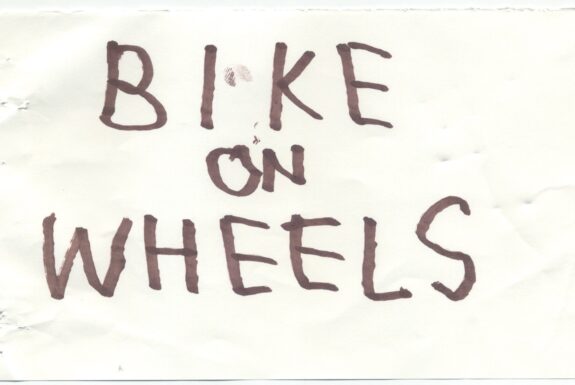
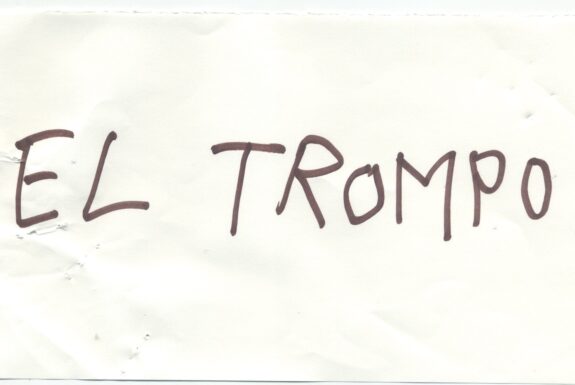

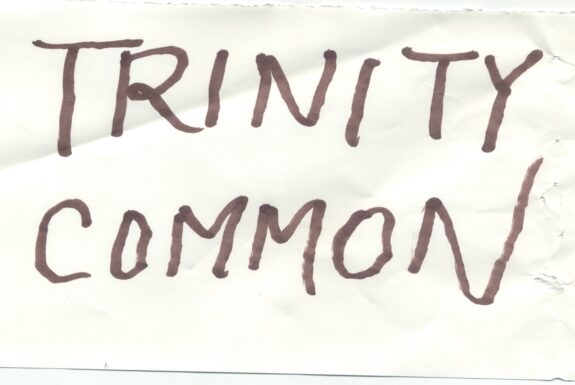
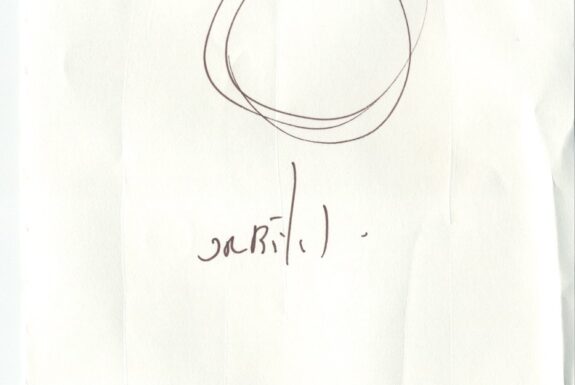
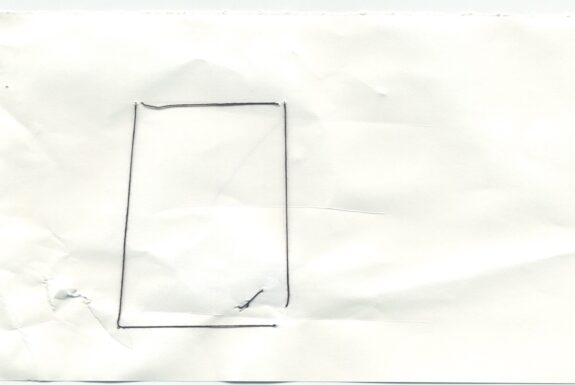


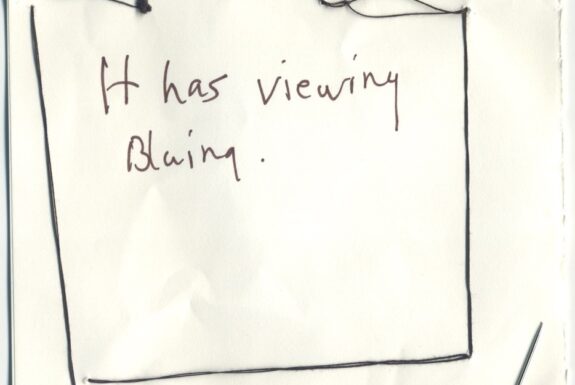
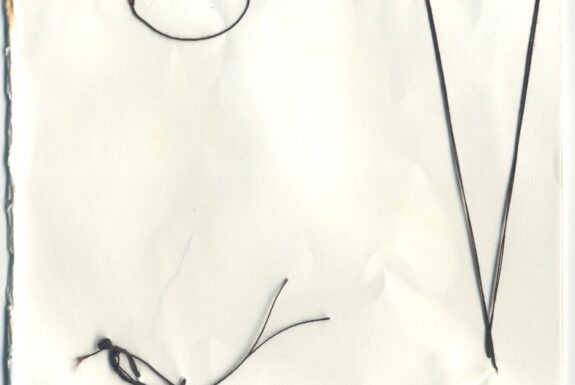
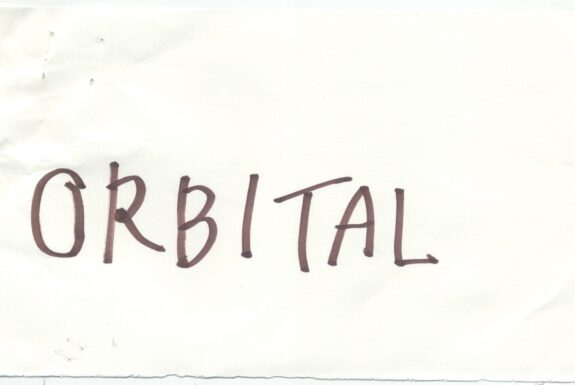
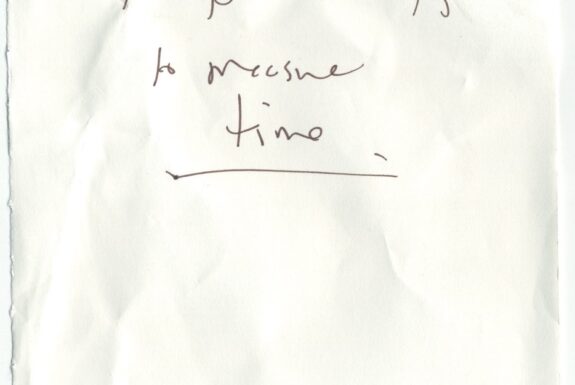
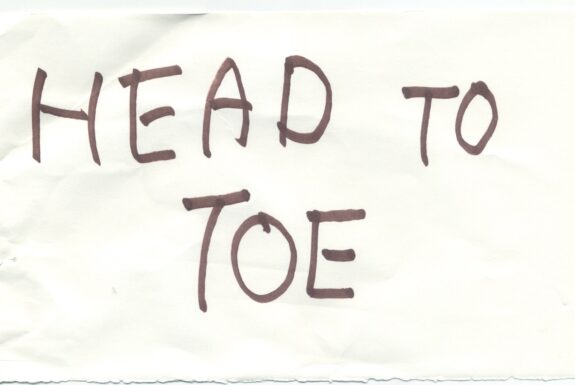
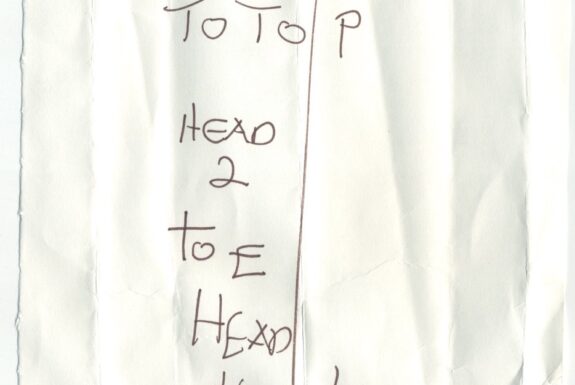
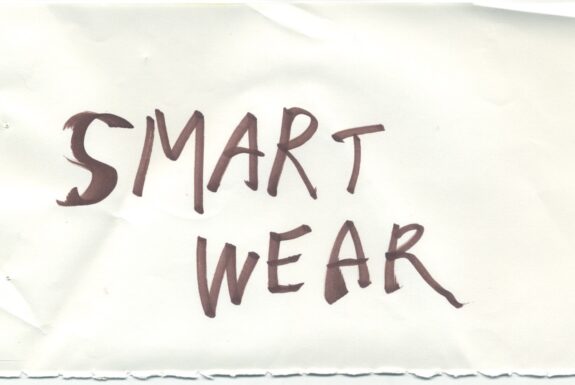

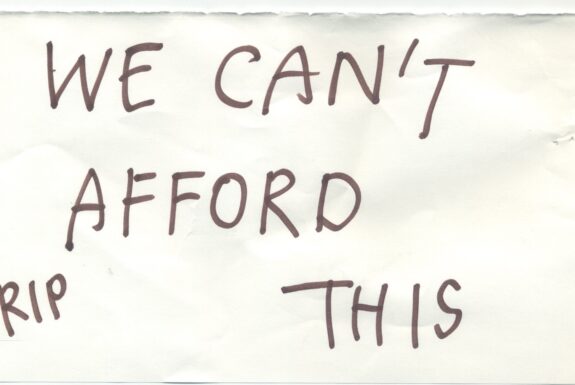
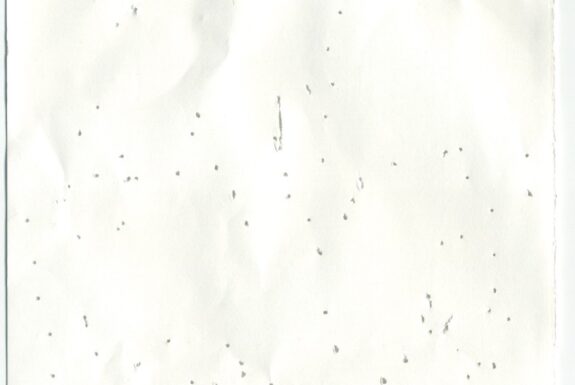
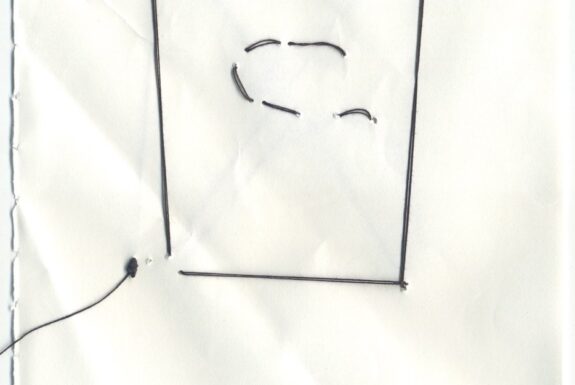
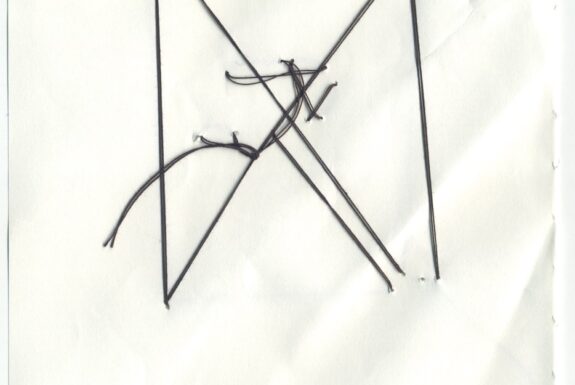


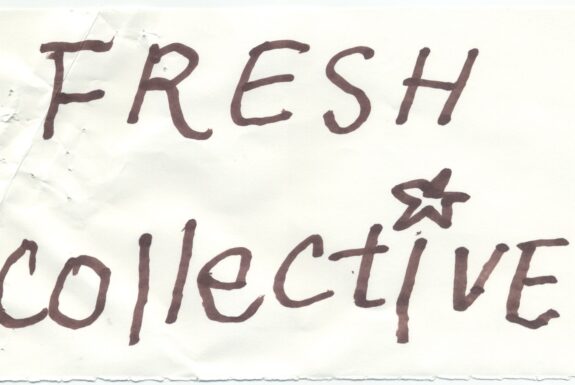

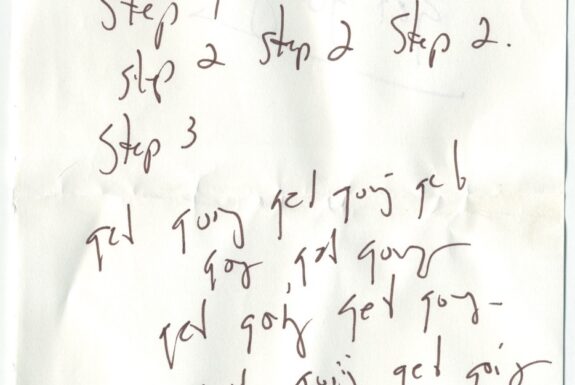
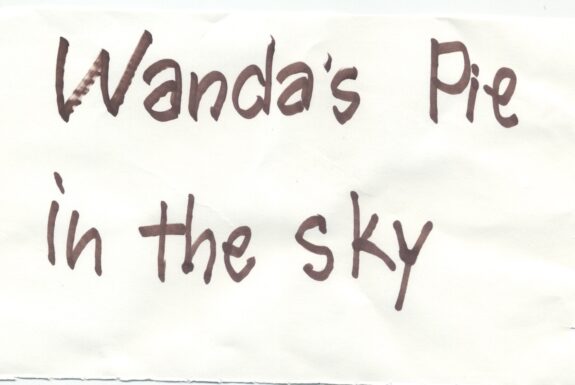
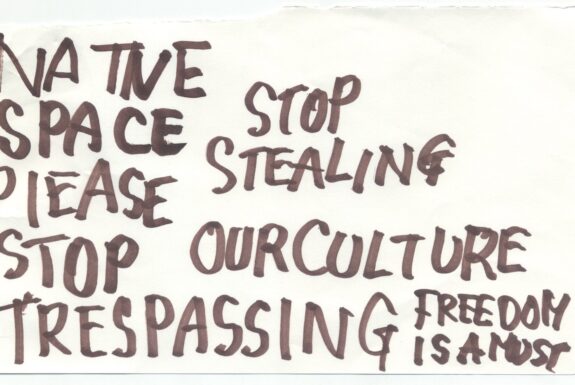
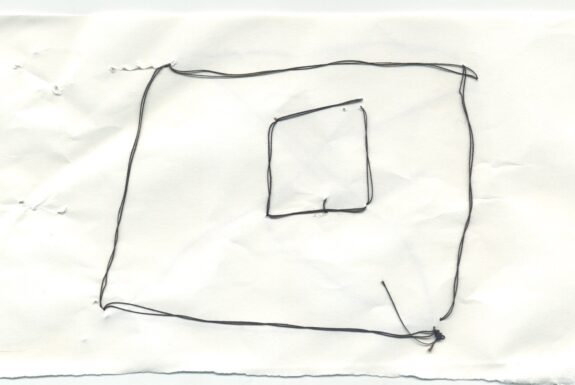
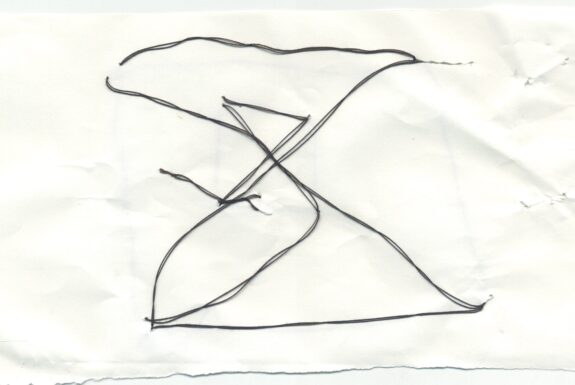

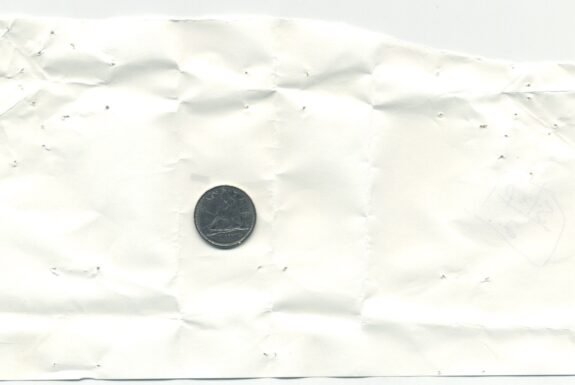

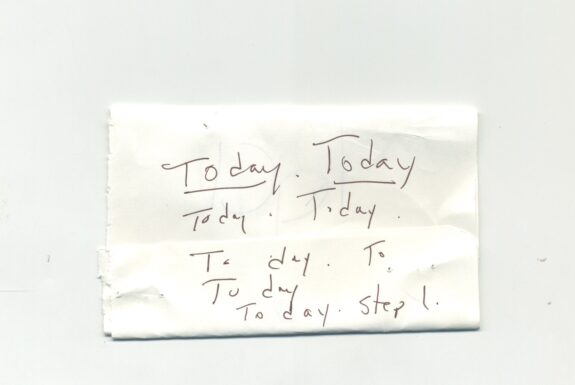
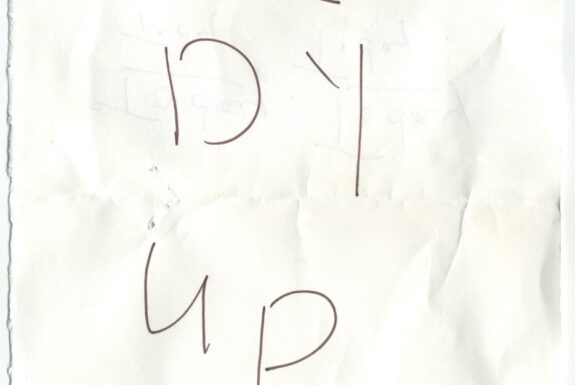

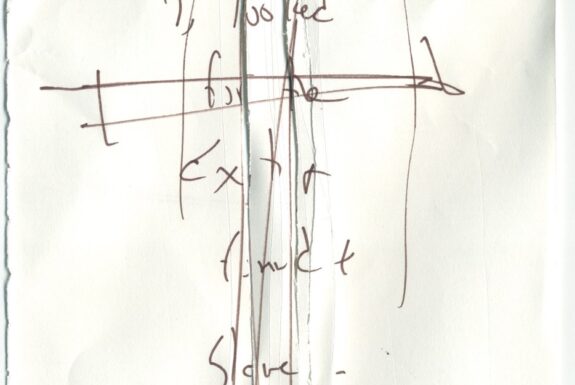

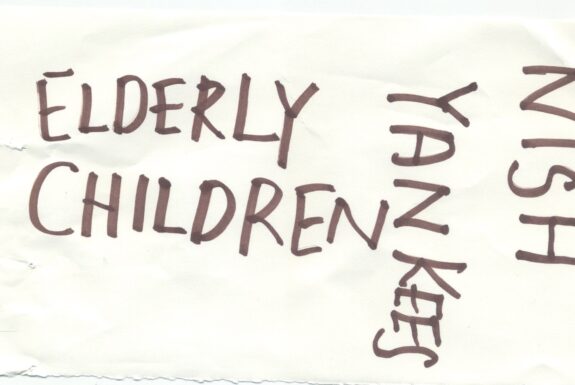
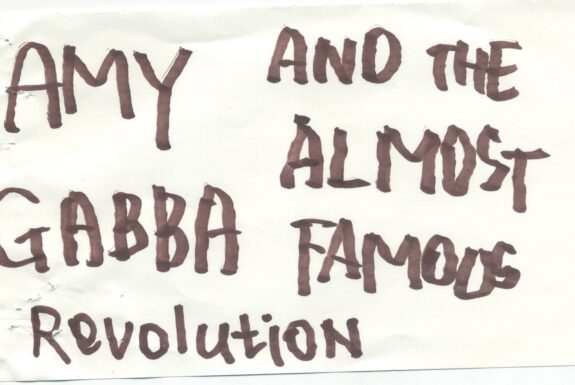

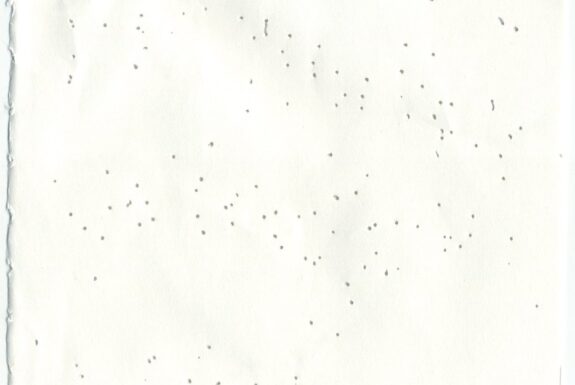

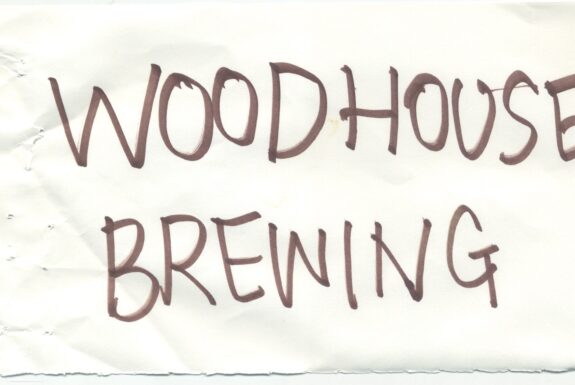

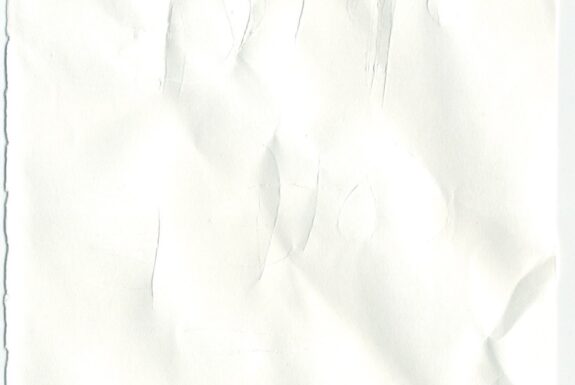
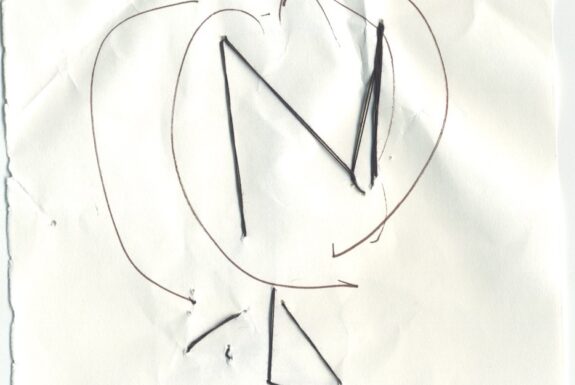
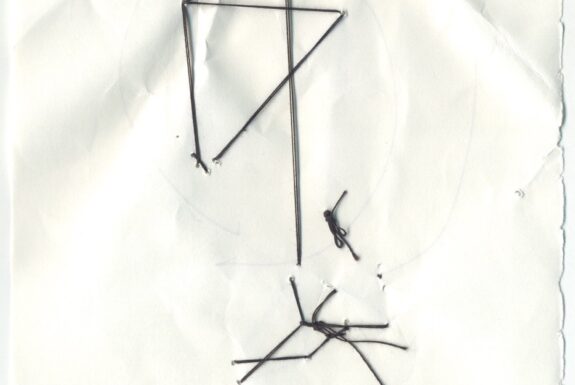
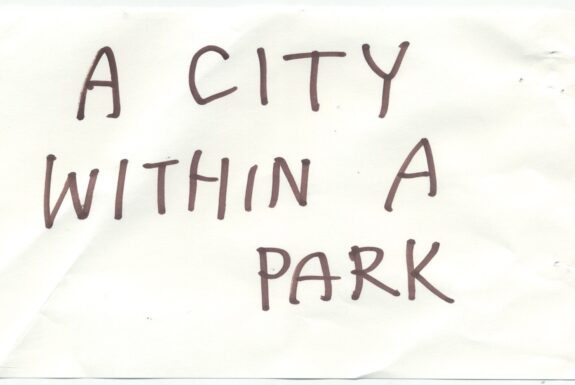
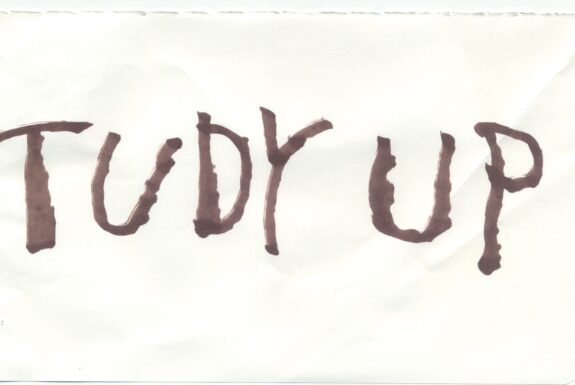
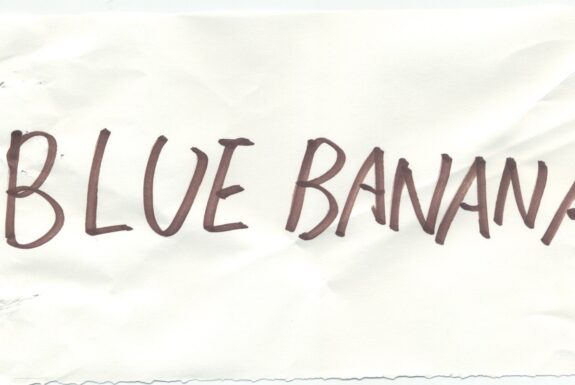
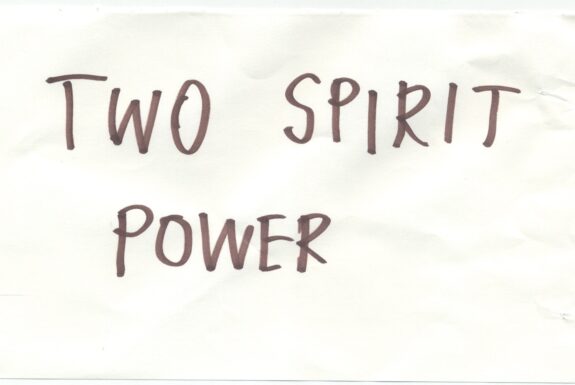

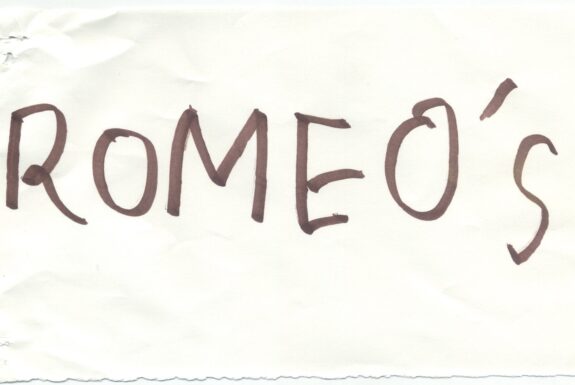
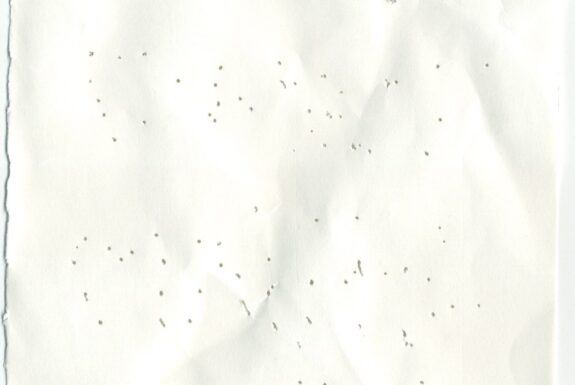
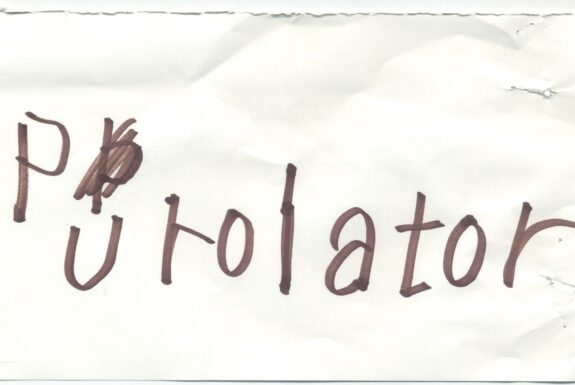

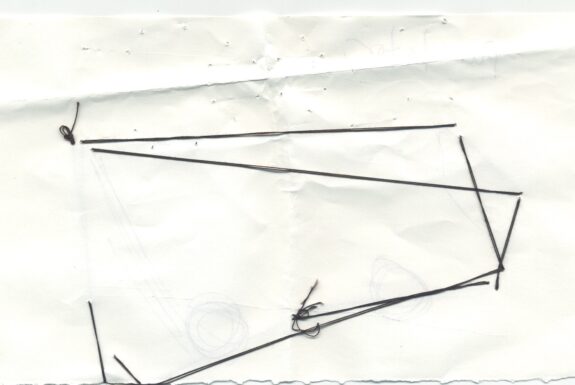
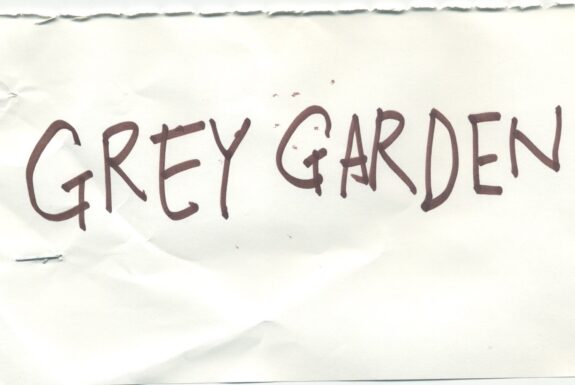
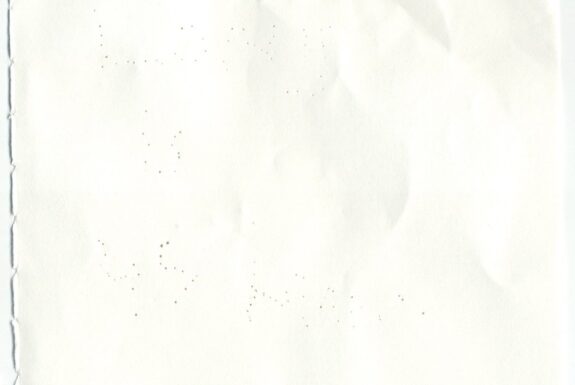
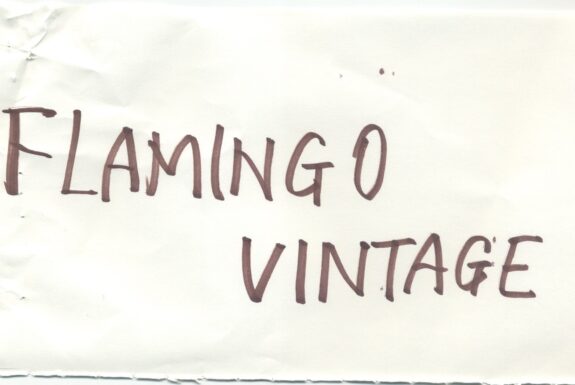
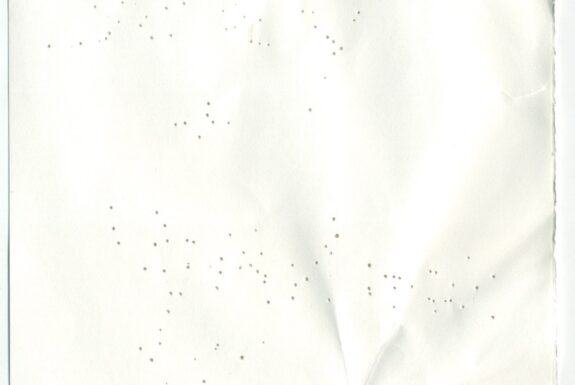
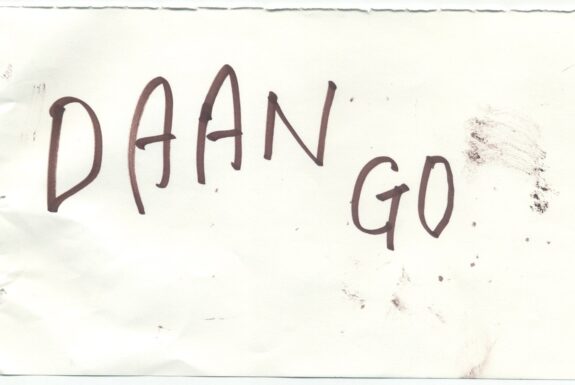



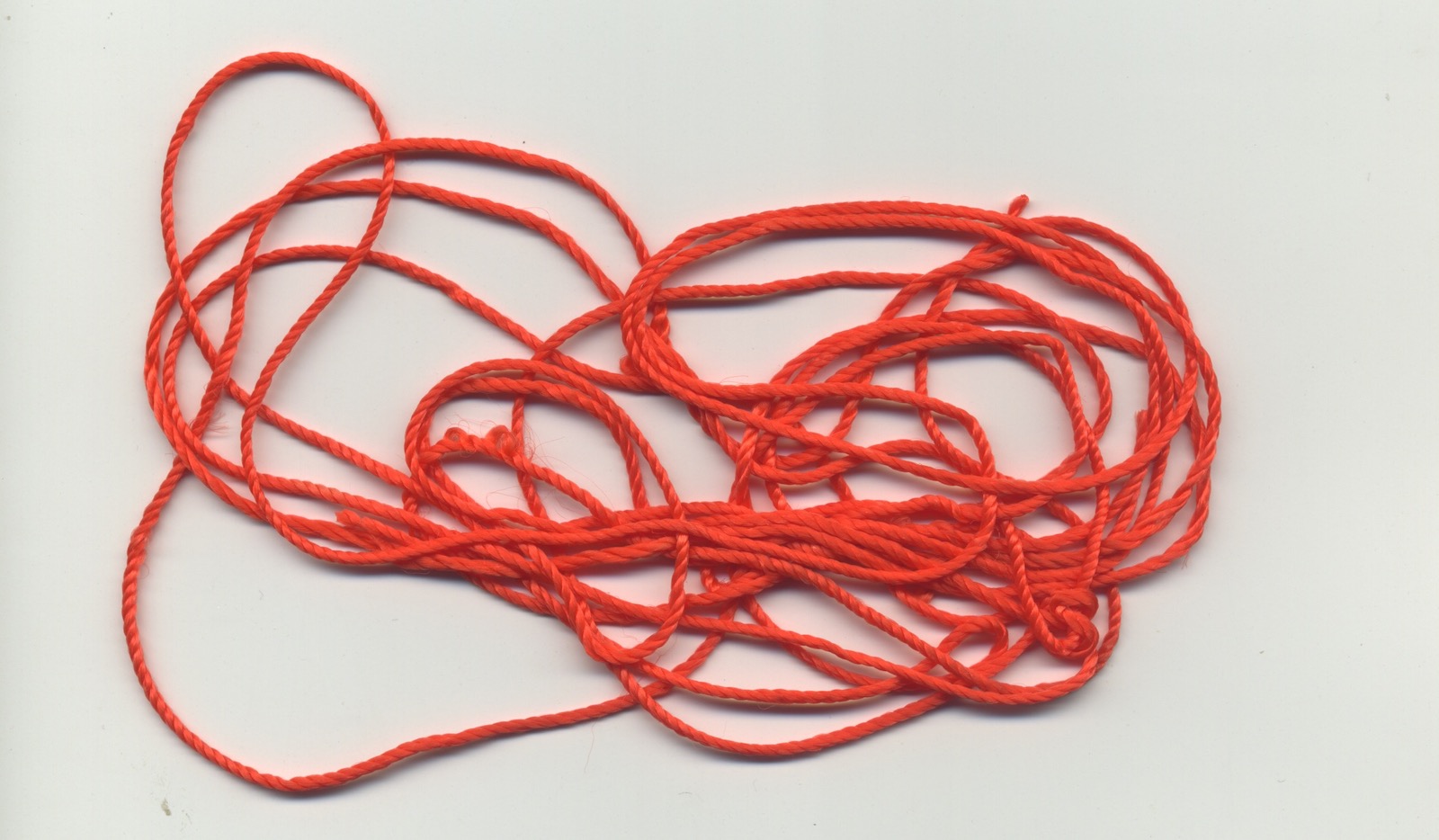
Some curatorial observations on Step 2
As noted above, one of my objectives in proposing negotiated interactions was to offer the invited artists an opportunity to sidestep the curatorial constraints of KinesTHESES. Yet much of what the artists reveal through their interactions strikes me as pertinent within the context of KinesTHESES. As a live observer of the interactions and the artists’ negotiation process for Step 2, I cannot resist offering a few observations about both the negotiation process and the intervention itself for those who may be interested.
The first time Stephanie and Sakiko met in person was at Sakiko’s KinesTHESES performance, Body Maintenance. Soon after, they met to discuss what they might do together. They quickly agreed on the idea of an outdoor action. As a local artist familiar with Toronto, Stephanie suggested the location of Kensington Market. She also proposed that the two artists, while not dressed in identical uniforms, should have some similarity of appearance, which they achieved by wearing similar but not matching black and white patterned leggings. These decisions offered a starting framework, but there still remained the essential question of what they would do. Did their actions need to be the same? Should they be directed toward each other? What did they, as relative strangers, want to do and say in this time and space and with each other?
One of the ways that Stephanie and Sakiko thought through what they might do was by shopping together. They visited MUJI, a Japanese department store with several Toronto locations, including the Atrium on Bay, about a 20-minute walk from Kensington Market. Looking at potential materials, and finding things they could both work with, notably matching beige notebooks, was helpful in determining potential actions. Stephanie was eager to use the lightweight clothing stands that she had purchased for her KinesTHESES project, and she proposed the idea of creating an installation with them that would be easily portable. Having a physical structure that the artists could construct and transform together provided a simple, unifying element while also allowing them freedom to work independently. They did not have to do the same actions, but they could still be creating something together.
Sakiko found a hand-sized orange plastic ball with the words “Step 2” printed on it, which became the title for their action. Just as the clothing stands provided Stephanie with a link to the work she was planning for KinesTHESES, the ball provided Sakiko a loose continuity with Body Maintenance, in which she had worked with a much larger (but still orange and bouncy) basketball. Sakiko also settled on a repeating gesture: spelling out the letters of words (business names and advertising, posters, graffiti, chalk markings, etc.) she encountered as the artists made their way through the Market, often bouncing the ball repeatedly in tandem with her vocalization to influence or emphasize the rhythm of her speech. For me, this action was reminiscent of the spelling/skipping games played by young girls. (Though I know no reason why such games should be gendered, I have not forgotten the teasing I endured as a “boy” joining in such games.) For Sakiko, who is not a native English speaker, deciphering and repeating the English words she encountered letter by letter offered a real but not impossible challenge. After calling out the letters and words, she would write them on a page that she would tear out of her notebook and staple to an orange cord that Stephanie had strung between the two clothing stands, which the artists had assembled at the first stop of their traveling intervention.
Stephanie also made marks on the pages of her notebook and hung them on the cord. She began by using black thread to sketch out silhouettes and outlines of the rooflines, buildings, and vehicles visible from the locations where they stopped, usually ones bearing words Sakiko was spelling out. As she made the thread drawings, Stephanie would sometimes repeat words she was hearing in a soft voice—not just the phrases being spelled out by Sakiko, but also snatches of conversation of passersby; some of these were also written onto the pages that she added to the orange cord. As the intervention progressed, Stephanie expanded her actions, sometimes making patterns on the notebook pages by poking a series of holes in the paper with her sewing needle.
There are many ways to understand Step 2 as a public intervention. It can be viewed, for example, as setting out a protocol of encounter, a way of discovering and negotiating an environment. For Sakiko, the written language visible everywhere in Kensington Market’s streets provided a starting point for interacting with a foreign place, a way of acclimatizing to its newness. For Stephanie, outlining the shapes she saw and repeating the sounds she heard offered a way of connecting differently with a familiar setting, detuning or retuning her senses to uncover new relationships or fresh perspectives. The cumulative installation was not only a point of intersection and accord between the two artists but also an ephemeral record of their surroundings and of their encounters over the course of the afternoon.
Of particular interest to me is how the actions in Step 2 emphasize the gesturality that grounds and informs both language and visuality. Contemporary theory tends to treat vision and language as monolithic, pre-given structures, without attending to how these powerful ways that humans perceive and describe the world are in fact built upon a ground of tactile-kinesthetic experience. Our ability to make sense of our environment—what we perceive as a “world”—comes out of an animate, multi-sensory engagement with our surroundings. Though we tend to separate mental and physical experience as distinct spheres, what we “think” is not independent of our bodily being and doing, but the result of an integrated, corporeally ordered synthesis of the experiences that our actions elicit. The relational meaningfulness of what we perceive, both spatially (e.g. large/small; far/near; inside/outside; under/over) and temporally (e.g. before/after; now/then), along with our conceptual frameworks of consequence and agency (e.g. if/then: if I do x, then y happens), are formed through our tactile-kinesthetic dispositions. Thought does not begin in language. Instead, corporeal and kinetic discovery and understanding come before language and indeed are essential to making language possible. As phenomenologist Maxine Sheets-Johnstone constantly reminds her readers, we think in movement. Similarly, tactile and kinesthetic understandings precede and inform the development of human visuality. If we did not already have the experience of our moving bodies, what we “see” with our eyes would be a barrage of chaotic, patternless sensation. The corporeal foundation of having a body that can negotiate the world and touch its surfaces is what allows us to interpret our visual detection of light, dark and colour as being qualia of a dimensional world with spatial depth.
Whether consciously or not, Sakiko would point to each of the letters as she sounded them out, emphasizing the spatial and corporeal relationships that link seeing, comprehending, and saying. Pointing helped make each letter tangible for her, so that it could be translated from an abstract pattern somewhere out there in the visual field into a meaningful sound generated from within her body. Her vocalizing—a talking into the air somewhat out of the ordinary from how one might normally act on a neighbourhood street—evoked other sensations for her as well. She told me later that she was conscious of the presentation date of Step 2, which coincided with Japan’s annual Obon festival. This is a time of year in which, by Buddhist custom, one honours the spirits of one’s ancestors, inviting them to return temporarily to their earthly homelands. Sakiko said she had the feeling that as she sounded out the letters and words, her head upturned toward to the sky, it was as if she were also calling to the spirits for whom this place had once been home, her voice guiding them back.
Sakiko’s pointing and repetitive bouncing of the ball connected the words and letters she spoke to movement, allowing her body to make sense of them so that they could be amplified and externalized as sound. This amplification through movement was matched by a condensation in Stephanie’s actions, which emphasized the complex ways in which our bodies translate the abstraction of visual form into intentional, animate gesture. Our visual understanding of surfaces and edges is tied to our tactility. As infants, we discover objects by feeling them, grasping them, rubbing them against our skin and putting them in our mouths. Understanding the way an edge forms a line in visual space, and reproducing that edge on a page, requires a layering of conceptualization and skill that integrates tactility and movement. Stephanie’s sewing gestures pointed to the way our bodies internalize these developed understandings through gesture, the movement of her hand forming straight lines with the thread to match and miniaturize the outlines of buildings and objects. The solid line in space is internalized as sweeping movements in the hand and arm.
Indeed, there is almost a kind of reverse engineering involved; the eye learns to see by integrating information from the hand, and then the hand learns to reproduce what the eye sees by doubling back on its learned gestures: a re-membering of tracing as a gesture. Our kinetic movements teach us how to identify and understand space and form.
There is also a further layering of kinetic and tactile intelligence evident in Stephanie’s use of thread to make these outlines: the thread must be knotted, the surface of the paper pierced, the spatial repositionings of the needle from line to line, corner to corner, hidden on the reverse side of the page. This is a cumulative, non-linear knowledge. As Stephanie worked with the materials, the penetrations began to create their own positive spaces on the white expanse of the paper. The repetitive piercing of the paper with the needle transformed and became a new, assertive, rapid-fire gesture, , transforming not only the look of the notebook pages Stephanie was producing, but her entire bodily disposition.
When Stephanie first began working with the notebook pages, she tended to sit in one position, torso still, with only her sewing hand and arm moving. Someone curious about what she was doing would have to lean in close to see her gestures. This contained, more inwardly focused energy contrasted with Sakiko’s attempt to translate the letters she was seeing into sounds that she could release into the air through her voice. Stephanie’s actions seemed aimed at gathering in and retaining the surrounding world within the tight confines of the notebook pages: concretizing the building and objects into threaded silhouettes, recording and repeating fragments of spoken conversation as written marks, even secreting a wayward dime by enfolding it in one of the pages. As the intervention progressed, however, Stephanie’s movements, tied as they were to interpreting what was around her, began to expand into that larger, more open space. Soon, she found herself standing, moving further afield from the cumulative sculpture of hanging notebook pages, pulling longer sections of thread with a flourish up into the air as she worked, or pressing the paper onto the various solid surfaces around her.
This expansion can of course be interpreted as being the product of aesthetic choices, informed perhaps by the artist’s growing comfort and familiarity with the situation and the environment. I also see it, however, as a reflection of the power of the gestures we make to inform our thinking. Doing is not only a result or product of thinking; it is, itself, a manifestation of corporeal intelligence, a form as well as an expression of bodily thought.
